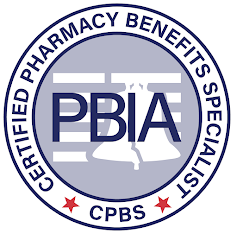The Need for Regulation to Positively Impact Drug Formulary Decisions to Ensure Appropriate Patient Access: A Little-Discussed Topic in Pharmaceutical Policy and Pricing Debate other notes from around the interweb:
- The Need for Regulation to Positively Impact Drug Formulary Decisions to Ensure Appropriate Patient Access: A Little-Discussed Topic in Pharmaceutical Policy and Pricing Debate. Most recently, PBMs have received an increasing amount of scrutiny. Two areas that have received significant attention are the PBMs’ impact on drug pricing and the lack of transparency in their business practices. One issue that has not received a great deal of attention is the misuse of the drug formulary—the foundation of the drug benefit—which consists of a list of medications covered by one’s health insurance. Although some would say that the purpose of drug formularies has remained the same over the past 30-plus years, others would disagree. Initially, drug formularies were developed by a pharmacy and therapeutics committee of a PBM, health plan, or other organization. The committee was made up primarily of clinicians and other experts who determined the safety, efficacy, and unique clinical aspects of the drug. If it met their standards, it was placed on the formulary.
- Copay Adjustment Programs: What Are They and What Do They Mean for Consumers? Americans spend on average more than $1,000 per person per year on prescription drugs, far surpassing prescription drug spending in other peer nations. According to a 2023 KFF poll, 3 in 10 adults taking prescription drugs report that they have not taken their medication as prescribed due to costs. In a 2023 KFF consumer survey, nearly one-quarter (23%) of insured adults reported that their health insurance did not cover a prescription drug or required a very high copay for a drug that a doctor prescribed, increasing to more than one-third (35%) of insured adults in fair or poor physical health. People who need specialty or brand-name medications to treat chronic health conditions such as diabetes, cancer, arthritis, and HIV are especially vulnerable to high costs, particularly considering rising deductibles over the years.
- Analysis finds that after 2 years GLP-1 drugs for weight loss don’t justify their price. Patients who have taken popular GLP-1 medications for weight loss aren’t saving themselves or their health plans any money, at least not right away. Eagan-based pharmacy benefits manager Prime Therapeutics issued that disappointing finding this week after analyzing the health care spending of thousands of patients who started taking GLP-1 medications in 2021, comparing them with similar patients who didn’t take the drugs. Spending was $4,206 higher per patient the year after they started taking the GLP-1 medications compared to the group of patients who didn’t take it, primarily because of the costly medications themselves. “It’s too soon to conclude whether these drugs will have a return on investment from a total cost of care perspective,” said David Lassen, Prime’s vice president of primary clinical services. “We didn’t expect to see that in two years, but we were hopeful that we would start to see something!”
- ‘Biosimilar’ drugs are gaining market share, Tufts researchers find. Biosimilars drugs are almost identical copies of original biologic products. Early biosimilars had slower adoption and savings than expected; however, biosimilars launched in recent years have had more success. With several biosimilar launches planned in the next few years, it is important to understand how the state of the market might foretell significant market savings in the future. To do so, we explored how the introduction of biosimilars affected originator-biosimilar markets during the period 2017–22. We found that after biosimilar availability, payers increasingly allowed choice of preferred products. By 2022, 76 percent of commercial payers’ coverage policies listed two or more products (originator or biosimilar) as first-line options. Biosimilar market shares exceeded those of originators by a mean of three years after the first biosimilar launch, and originator-biosimilar market average sales price declined substantially. Taken together, these findings provide evidence of a functioning competitive market.

